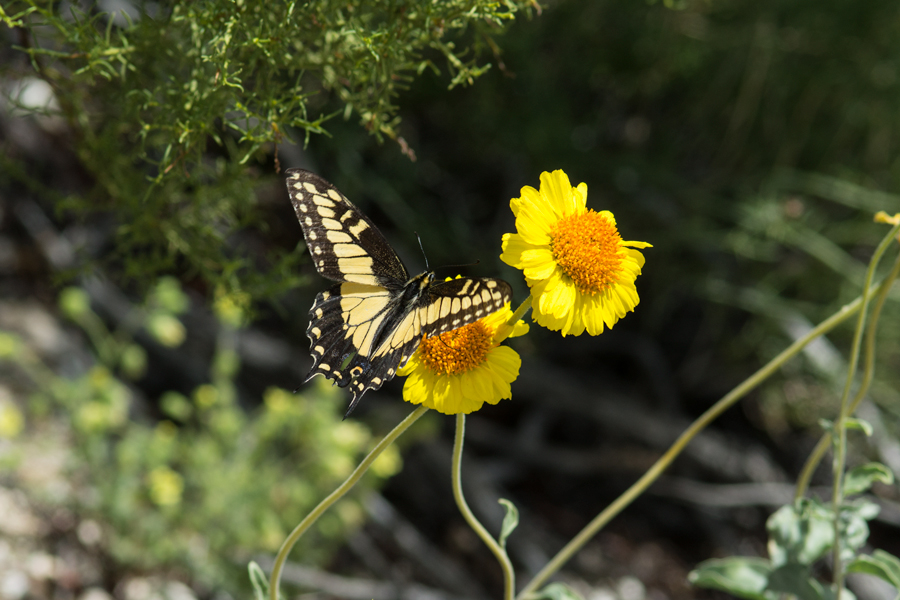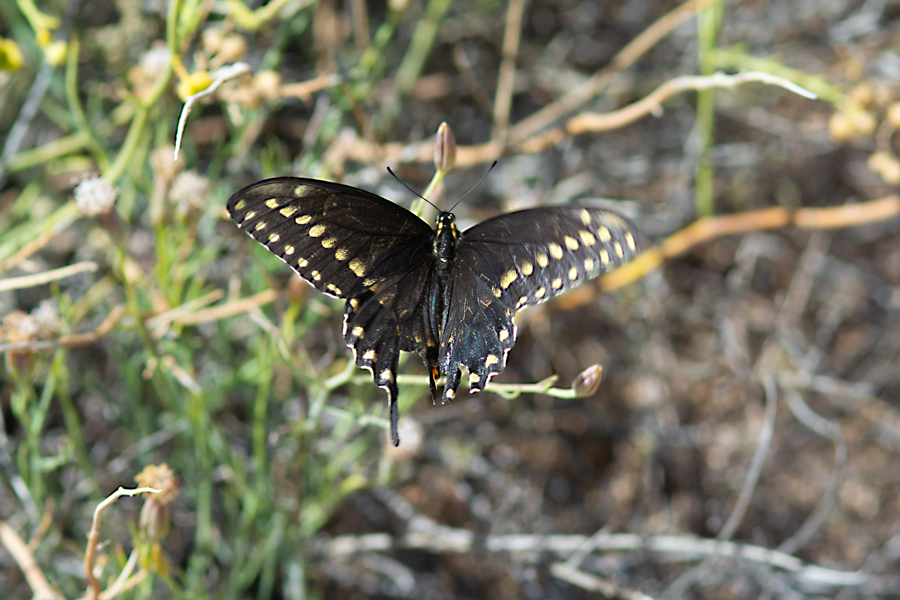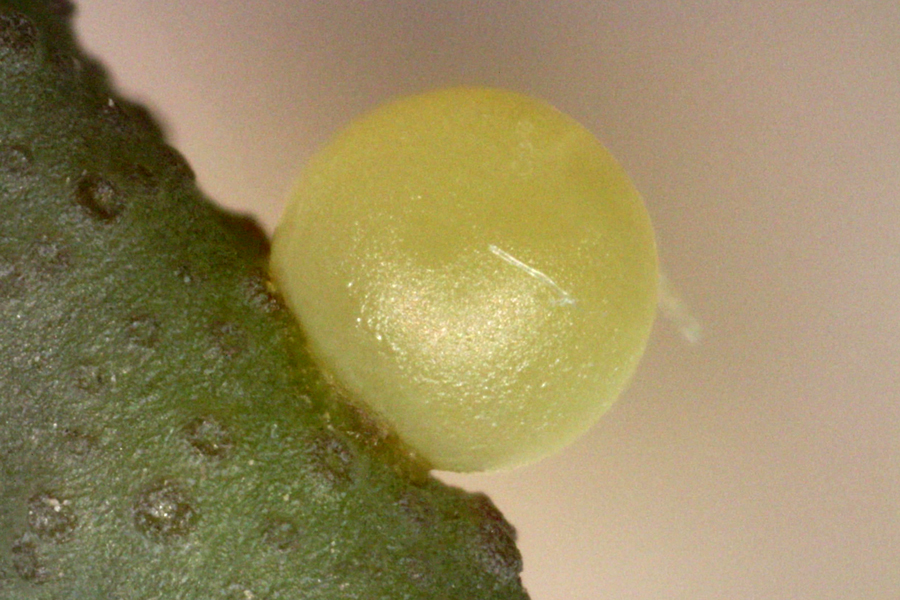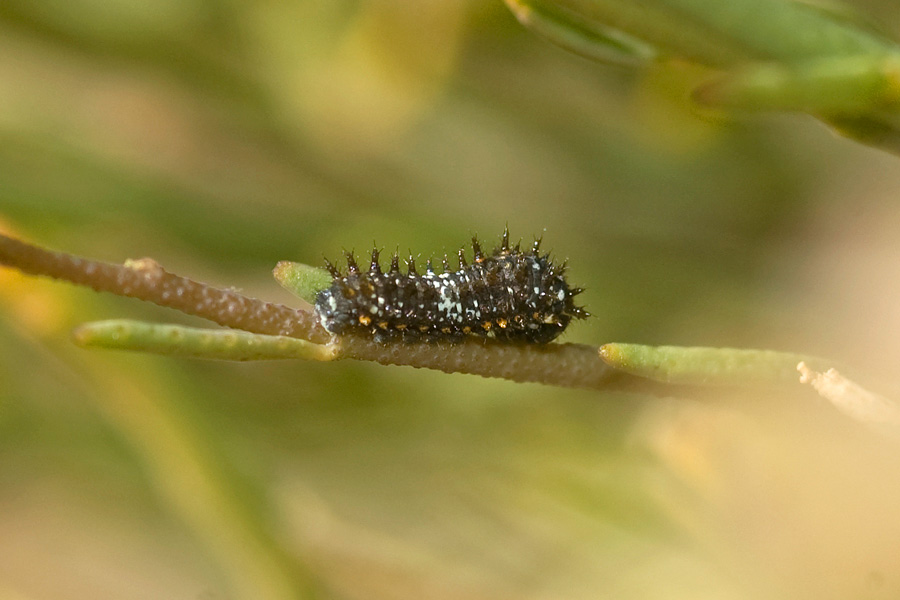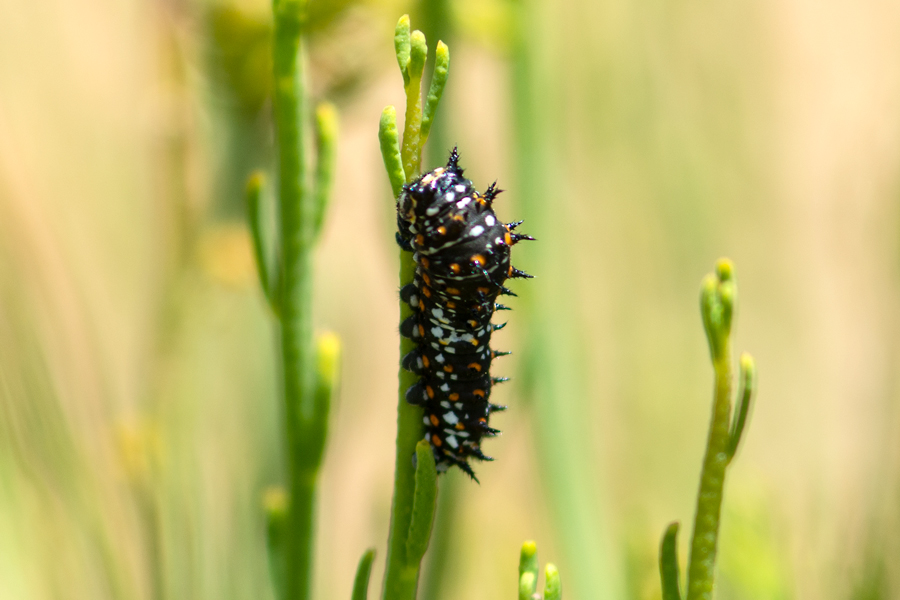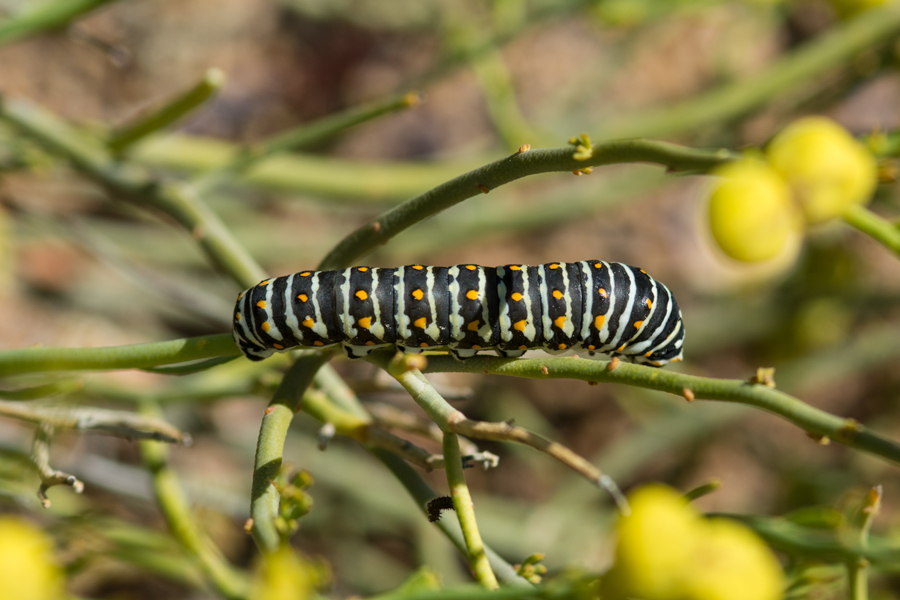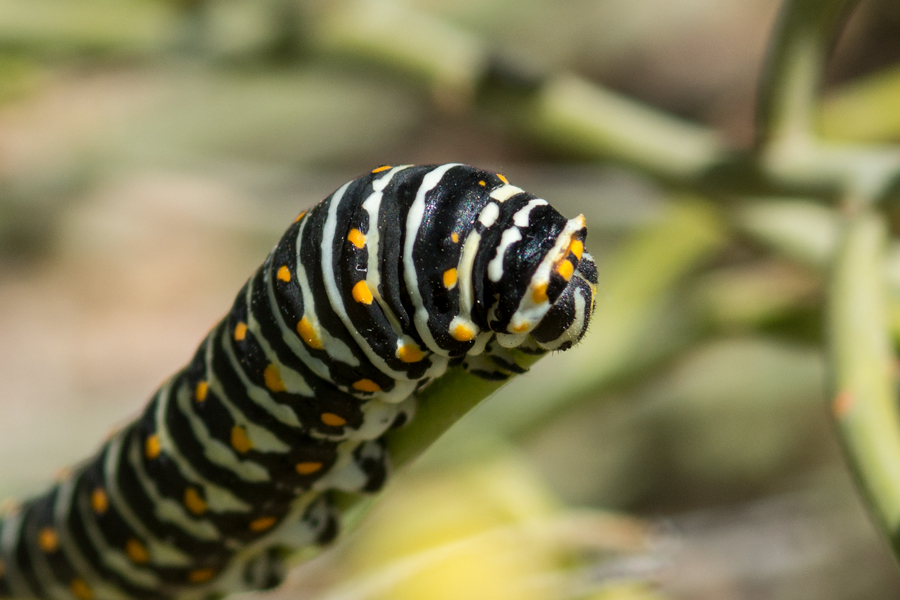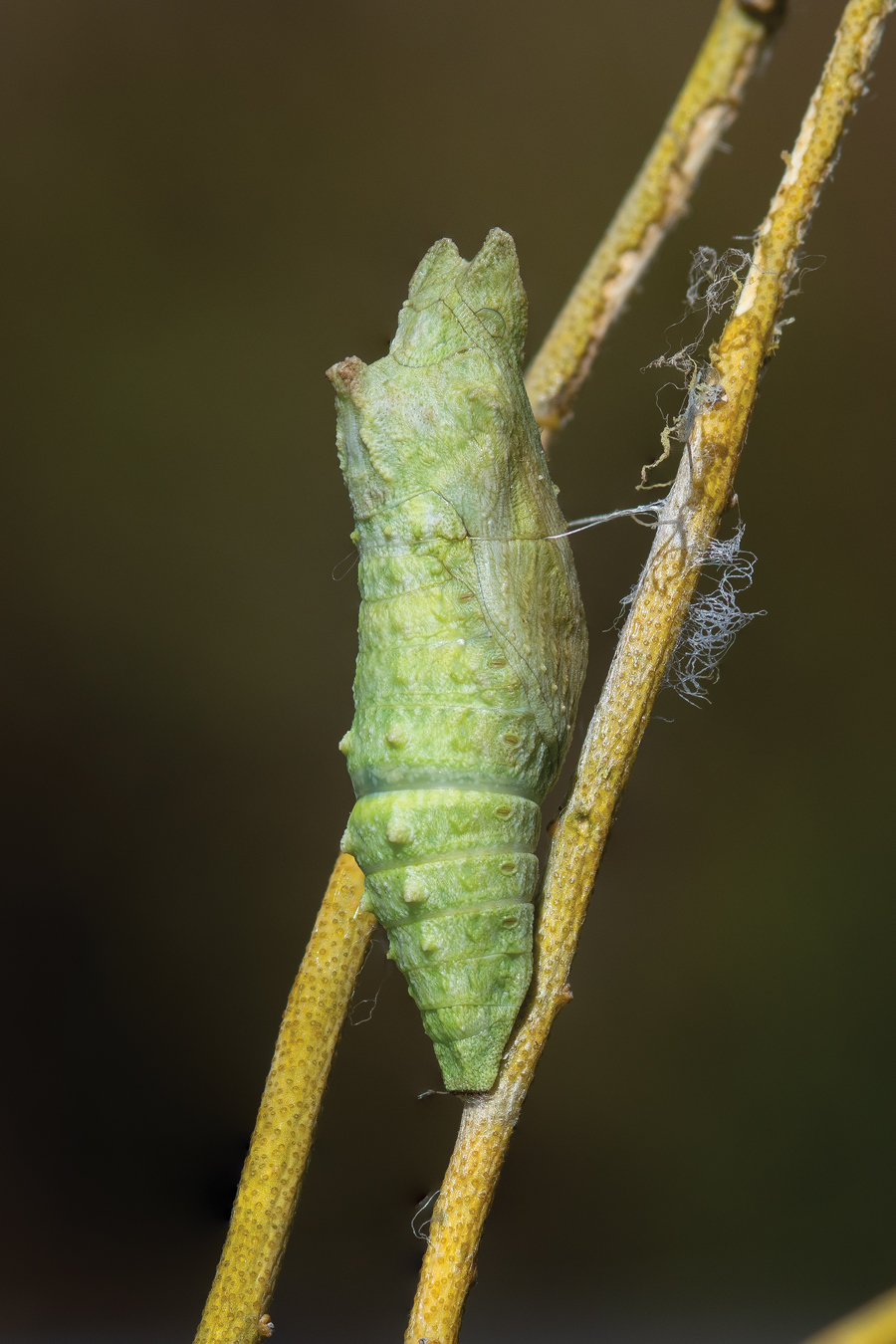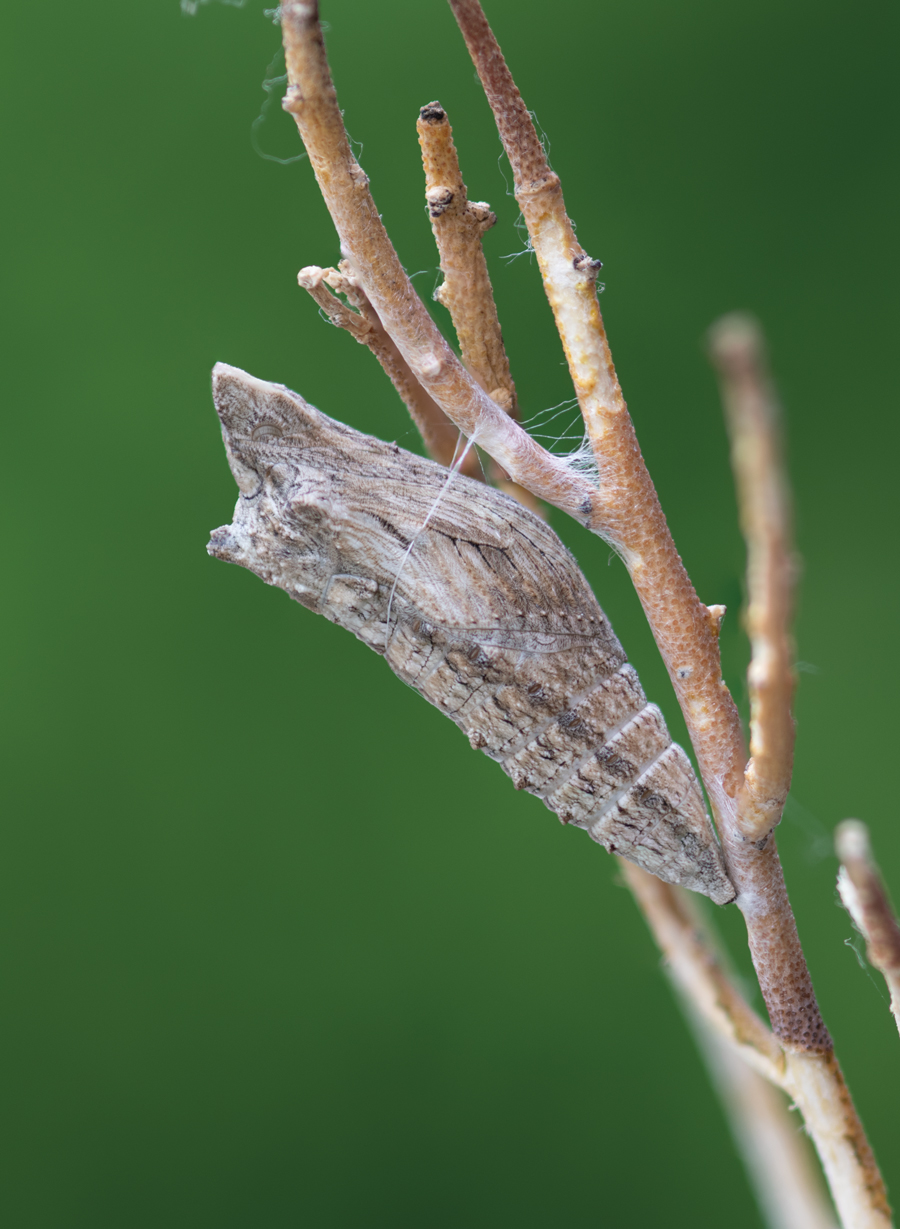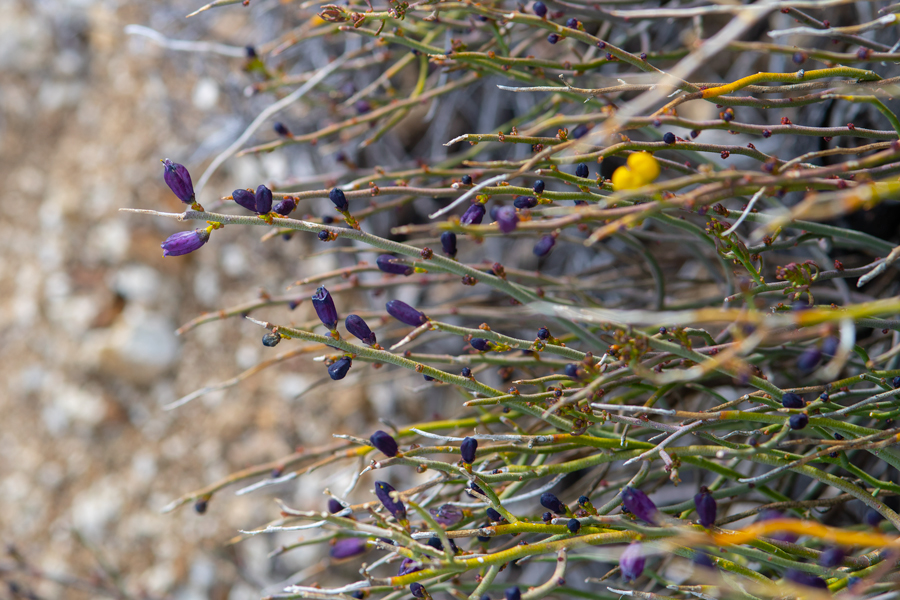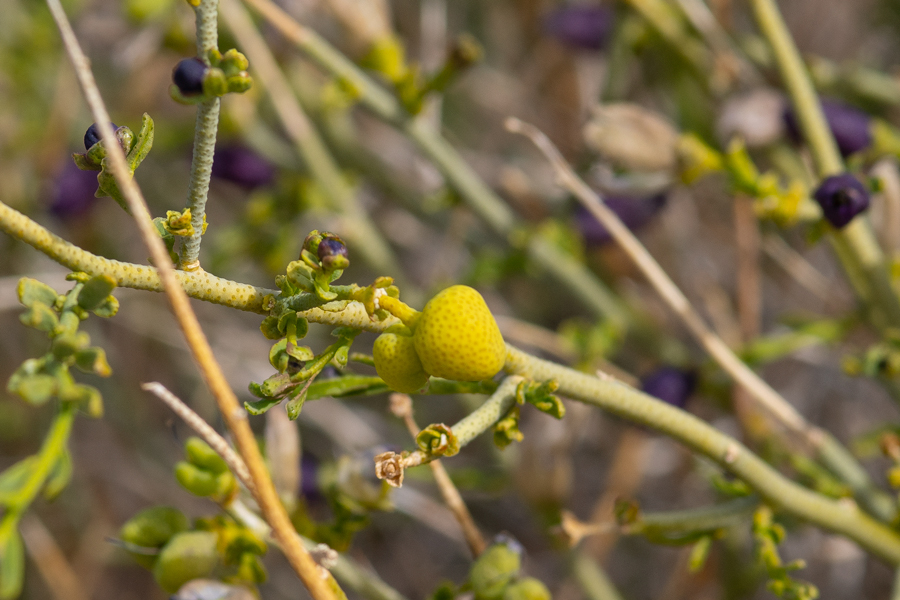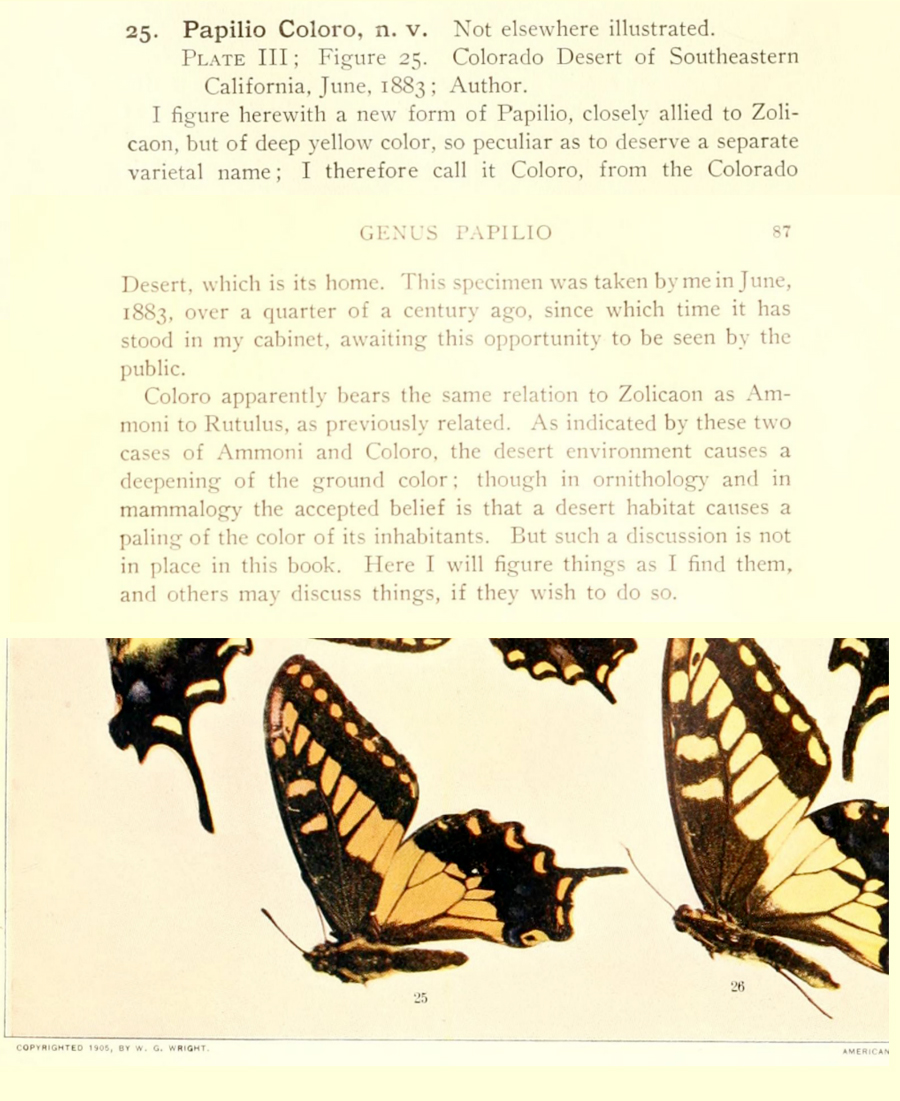Papilio polyxenes rudkini
Desert Black Swallowtail
This denizen of the desert is closely related to Papilio zelicaon and easily confused with that species. One key difference is habitat: rudkini (formerly coloro) is expected in the deserts and prefers turpentine broom (Thamnosma montana) as the host. The anise swallowtail prefers cooler climes and will use fennel, as well as other carrot family plants. Either species may use Tauschia arguta or something similar in a pinch. Where they do overlap, they can usually be told apart through differences mentioned on the zelicaon page.
The desert black is an avid hilltopper. It can also be common in desert environs in favorable years where the host is present. For instance, in spring of 2020, this butterfly was very common in the Mojave National Preserve, whether atop Teutonia Peak, or anywhere else turpentine broom was growing. I even saw a couple of the black form clarki there for the first time.
This butterfly was first named as the equivalent of a subspecies by W.G. Wright in 1905. In a 1982 paper by C. Ferris and J.F. Emmel ("Discussion of Papilio coloro W.G. Wright (= Papilio rudkini F. and R. Chermock) and Papilio polyxenes Fabricius (PAPILIONIDAE)," Bulletin of the Allyn Museum, No. 76, pp. 1ff), the type locality was determined as Whitewater Hill in the Coachella Valley. That is just northwest of the intersection of Interstate 10 and highway 62 in an area now full of wind turbines.
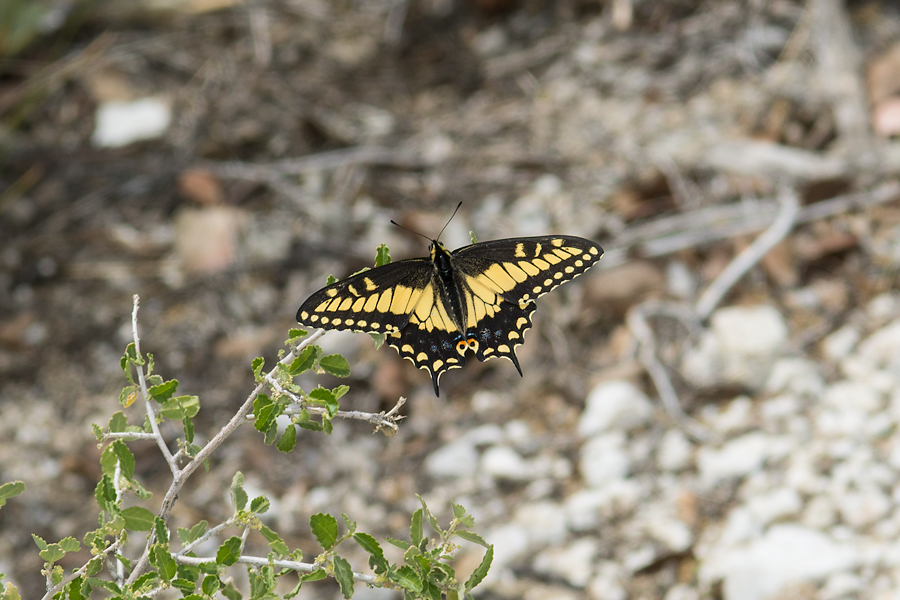
A fresh Papilio polyxenes rudkini perching along Cactus Spring Trail, April 27, 2017.
Here's a rudkini taking nectar on the same trail a week earlier, April 22, 2017.
I chased this black rudkini all over the desert floor off Lanfair Road on the way to a hike in the New York Mountains in the Mojave National Preserve. John Comstock named the dark forms clarki and comstocki that pop up rarely in desert swallowtails, and this one would appear to be the former (no pun intended). Taxonomically, that means next to nothing; it's just a cool aberration.
I watched a female oviposit on the Thamnosma montana host on September 8th, 2023. The egg is pretty typical for swallowtails.
Small, early stage caterpillar of
Papilio polyxenes rudkini, probably a second instar, on host
Thamnosma montana. April 15, 2011, at the Cactus Springs Trail in the Santa Rosa Wilderness.
Another caterpillar of Papilio polyxenes rudkini, probably a fourth instar. After this stage, the spines disappear and they become smooth - see the one above from 2017. April 30, 2019, again at Cactus Springs Trail in the Santa Rosa Wilderness.
A hungry last-instar rudkini larva was munching host Thamnosma montana right at the trailhead on the same hike as above.
A closer look at the same caterpillar.
Thanks to Gordon Pratt for giving me this green chrysalis of the desert black swallowtail. Photographed on March 14th, 2023.
Later, Gordon let me have a brown form chrysalis. May 28, 2023.
The purple flowers of Thamnosma montana.
Small yellow fruit of the citrus-family plant Thamnosma montana.
William Greenwood Wright described this swallowtail in the 1905 book Butterflies of the West Coast. He personally collected the type, and many other of the butterflies in his book.
©Dennis Walker

